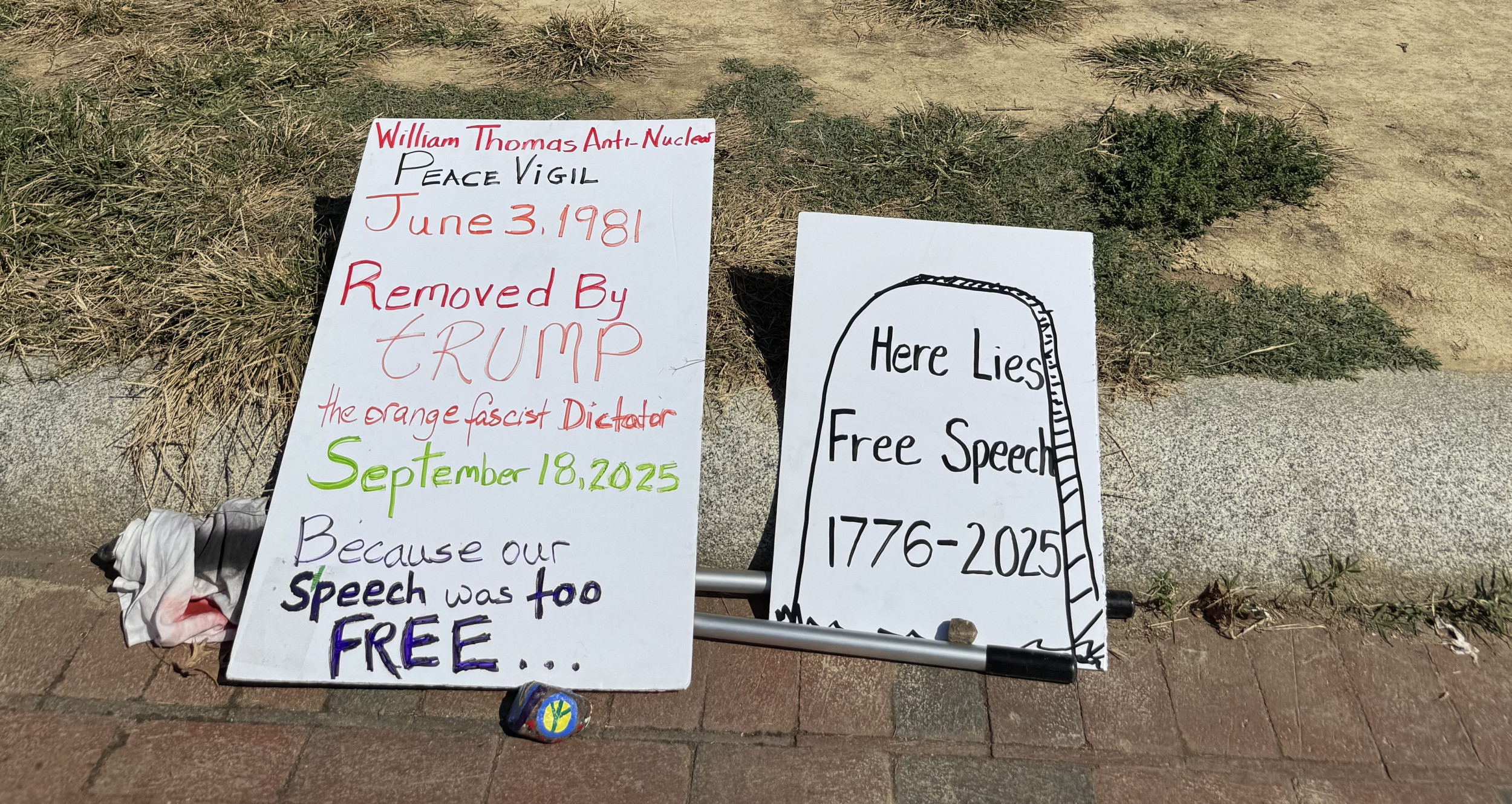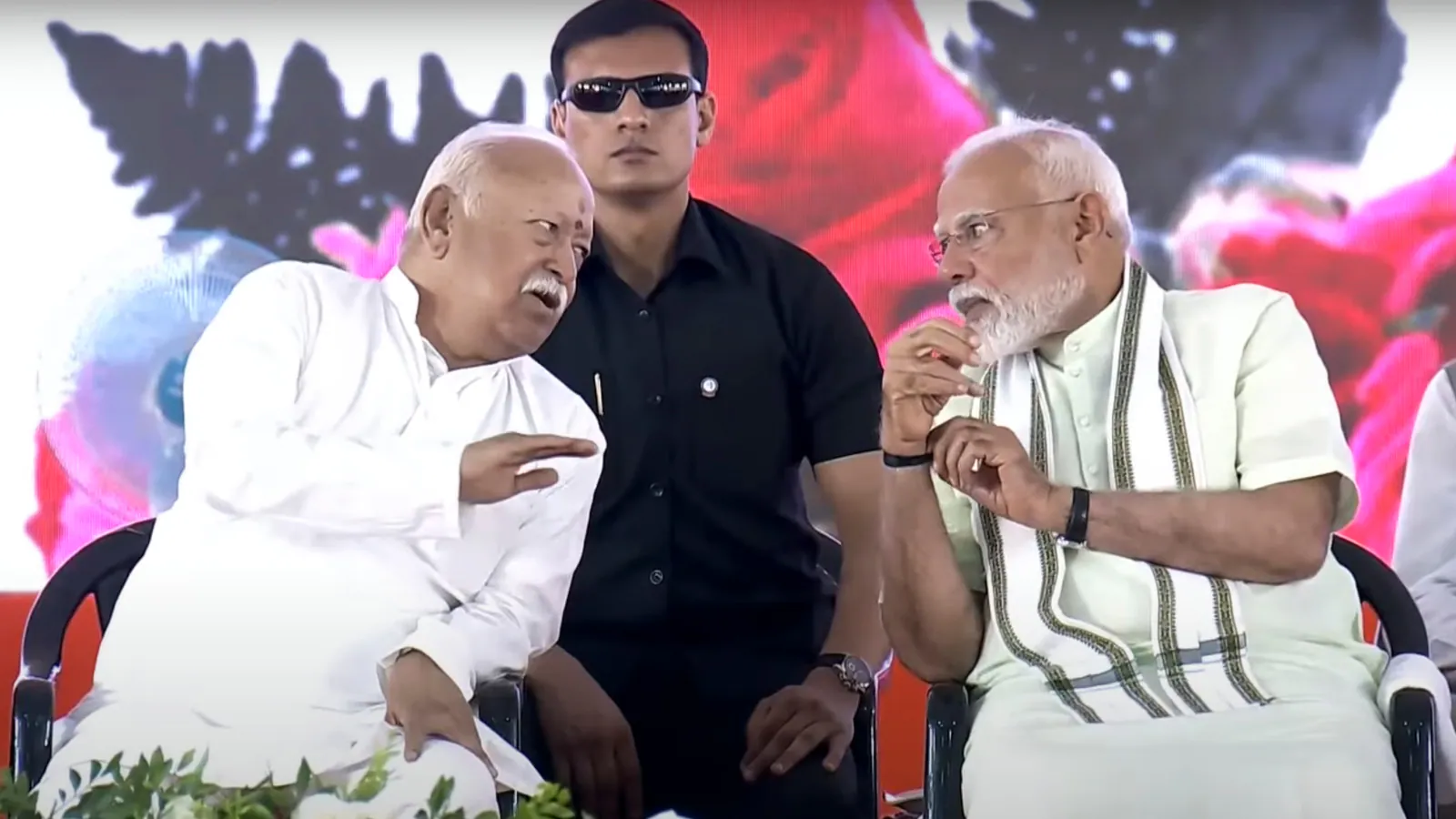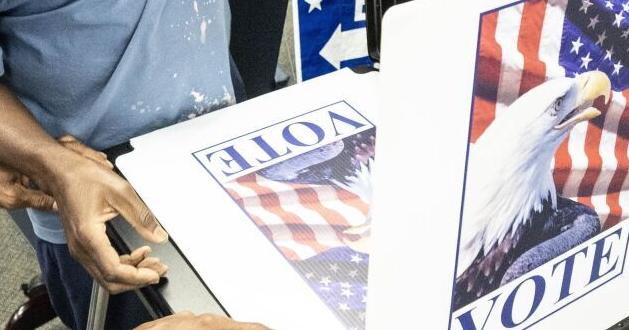
When U.S. Park Police officers arrived at Lafayette Square on Thursday evening to dismantle what remained of the White House Peace Vigil, activists at the longstanding protest site were ready.
“I knew it was coming,” said Nadine Seiler, 60, an activist who was at the park across from the White House at the time and has participated in the vigil since 2018. “This is just the trajectory of the U.S. under authoritarianism.”
The vigil, originally an anti-nuclear proliferation protest that has been in the park in some form continuously since 1981— making it among the longest-running political protest sites in the country — has been under scrutiny since President Donald Trump ordered it to be taken down earlier this month. Park Police officers first dismantled part of the site in Lafayette Square on Sept. 7, and returned this week to remove more material.
The final removal of all remaining signs of the protest still rattled activists, coming at a moment of national debate over free speech protections and, what they say, is an anti-democratic administration determined to crack down on even the most peaceful and non-confrontational forms of protest.
“As an individual, I didn’t even subscribe to every message that was posted on the peace vigil, but I strongly believe that it had a right to exist,” said Will Roosien, 24, an activist who was at the protest site Thursday. Targeting the peace vigil offers further proof that Trump “wants to diminish free speech among political dissidents,” he added.
Newsweek reached out to the U.S. Park Police for comment.
The peace vigil was brought to Trump’s attention on Sept. 5 when a correspondent for Real America’s Voice, a far-right news outlet, told the president in an exchange with reporters in the Oval Office that the site’s trademark blue tent was an “eyesore.”
Trump asked where the peace vigil was, and then wondered aloud if it had turned into a “radical left” protest. Trump then turned to staff and said: “Take it down.” He later touted the site’s removal, saying on Sept. 8 that it came down “very quickly.”
The peace site had been in place for more than four decades across from the North Lawn of the White House, continuing through rain, snow, wars and more than half a dozen presidencies. The vigil has long served as a gathering place for political protests, and became a popular tourist attraction for visitors seeking a glimpse of the White House.
The controversy comes amid a broader national debate over free speech in politics and the news and entertainment industries.
On Wednesday, ABC announced that it was pulling late night host Jimmy Kimmel off the air “indefinitely” over his on-air comments about the suspect charged with killing conservative activist Charlie Kirk.
The decision came just hours after Brendan Carr, the chairman of the Federal Communications Commission, said that his agency would consider taking action against Kimmell in response to his comments.
Kimmel’s suspension was widely criticized as an attack on the First Amendment by the Trump administration, given Carr’s remarks. Since taking office, Trump has filed lawsuits against several news organizations claiming unfair coverage of his presidency.
Earlier this week, Trump filed a $15 billion defamation lawsuit against the New York Times. The news organization dismissed the charges as meritless. A federal judge on Friday tossed out the lawsuit.
Trump filed the suit the same week he promoted free speech during a pomp-filled state visit to the United Kingdom.
Back at the former peace vigil site Friday, Seiler and a few other activists held protest signs as tourists milled about snapped pictures of the White House. Seiler, who lives nearby in Waldorf, Maryland, said she planned to continue protesting at the site, even as she referred to it in the past tense.
“I’ll come as much as I can,” Seiler said. “This was a symbol of free speech.”



